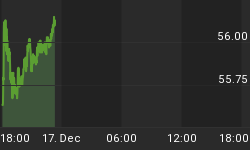Supply changes coming?
On the supply side, we note that newly mined gold supply in 2013 was around 2,800 tonnes [final figures yet to be published] and scrap gold was around 1,400 tonnes, before U.S. sales [which were around 1,200 tonnes in 2013]. That totaled 5,400 tonnes.
Scrap Sales
With prices at $1,200 there is little incentive for scrap sellers to sell for profit. So these supplies in 2014 are expected to drop substantially, until prices rise back to much higher levels.
Newly Mined gold
To sustain supply levels of gold miners need to continuously explore and start up new ventures. From discovery to production takes in excess of 5 years. What is the condition of future supplies?
Gold discoveries have fallen off the cliff from 4,977 tonnes [160 million ounces] in 1995 to fewer than 155 tonnes [5 million ounces] in 2011.
We are hearing that so many Junior miners and ventures are failing and projects shelved. The costs are so close to income potential that they are losing their backer's support.
This week we heard from Harmony Gold mine in South Africa, which has implemented expenditure cuts on capital expenditure and exploration to a cost per ounce of $1,150. As the head of Goldfields said last year gold mining below $1,500 isn't viable.
Cutting costs this way is done primarily by moving production to higher grade ore and mothballing lower grade production. This shortens the life and production capacity of mines and, in turn, global production levels. After all, the same principle has to be applied throughout the gold mining world.
This limits future gold production levels significantly. Accurate figures for this are not available just rough estimates [10% - 50% over time?].
With so many new ventures in politically unstable countries or where huge infrastructure problems exist the risks for new ventures are so much higher than they were last century. So, in future years the number of new mines coming on stream has been savaged.
U.S. based gold ETF sales
If the U.S. has nearly completed sales from gold ETFs then the market will lose that vital source of supply trimming around 1,200 tonnes [including the sales of physical gold last year [April in particular] off London's supplies.
The 5,400 tonnes of supply will drop in 2014 and we estimate this fall could take London's supply down by 2,000 tonnes +. Gold prices will have to reflect this.
With such a fall, where will China buy its gold from at current prices? It can't. It will have to decide to pay up to rising prices or exit the market.
We do not believe it will exit the market 'officially' [for the reasons given in the previous article]. It will continue to access as much gold as it can.
The retail trade in China will lessen demand simply because the disposable income they have, while rising quickly, will achieve only the volume that money can buy. Perhaps the average middle class income will buy perhaps 25% less gold, if prices rise that much, but we believe the size of the middle class, in China, will rise by that much in 2014. So expect a similar level of Chinese retail demand in 2014 to the new record year of 2013.
But be clear on one fact, the Chinese and Indian markets want to feel the gold in their hands. Derivatives and gold share are no substitute there!
Can China hold prices down?
China cannot hold prices down. It can only buy what it can by 'buying the dips' and sourcing gold outside of the London market. It will continue to do that. But with the supply/demand picture changing so much in 2014 and beyond, they will accept rising prices. We believe they have been buying knowing that would happen in the future.
They are fully aware that paper currencies will cheapen in the future, as confidence in them falls, until gold is used, once more, to price currencies.
Hold your gold in such a way that governments and banks can't seize it!
Visit: www.stockbridgeMgMt.com And Enquire @ admin@StockbridgeMgMt.com
Subscribe to www.GoldForecaster.com
And www.SilverForecaster.com















